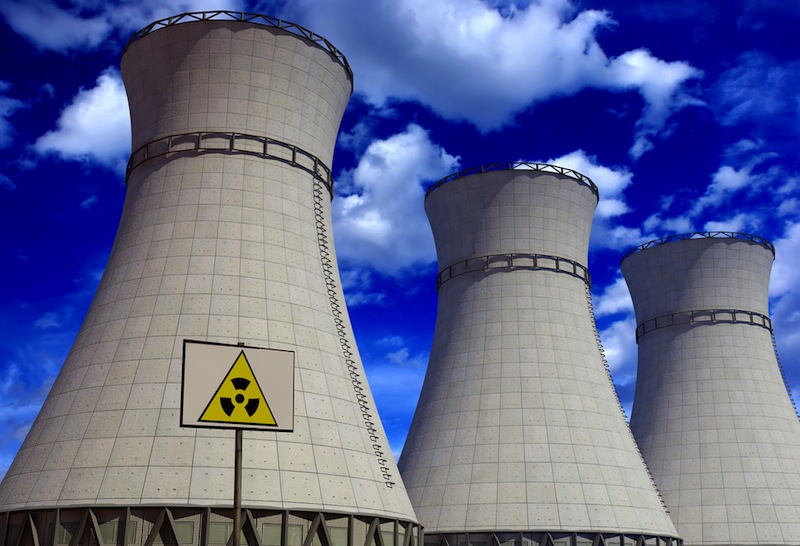A new government report challenges a pillar of planning for disasters at American nuclear power plants, finding that people living beyond the official 10-mile evacuation zone might be so frightened by the prospect of spreading radiation that they would flee of their own accord, clog roads, and delay the escape of others.
For more than 30 years, community readiness has been based on the belief that evacuation planning isn’t needed beyond 10 miles from nuclear sites. But the Government Accountability Office report — to be released later Wednesday but obtained in advance by The Associated Press — found that regulators have never properly studied how many people beyond 10 miles would make their own decisions to take flight, prompting what is called a “shadow evacuation.”
As a result, the GAO report says, “evacuation time estimates may not accurately consider the impact of shadow evacuations.” The Nuclear Regulatory Commission, the federal agency in charge of nuclear safety, disputed the findings.
The investigation was requested by four U.S. senators: Democrats Barbara Boxer of California, Robert P. Casey Jr. of Pennsylvania, Sheldon Whitehouse of Rhode Island and independent Bernard Sanders of Vermont. They asked for the report in 2011 in response to an AP investigative series reporting weaknesses in community planning for nuclear accidents, including the likelihood of surprisingly large shadow evacuations. The GAO acts as an investigative arm of Congress.
The disaster at the Fukushima Dai-ichi nuclear complex in Japan two years ago has heightened worry about how well U.S. communities can protect themselves from a major release of radiation. When a tsunami cut off power and nuclear fuel melted, more than 150,000 people fled the Fukushima area, many from well beyond 12 miles, according to Japan’s Education Ministry. U.S. officials recommended that Americans in Japan stay 50 miles back.
Under federal rules, however, U.S. communities practice for evacuation or other protective action by residents only within 10 miles of nuclear power plants. States also lay plans to limit consumption of contaminated crops, milk and water within 50 miles.
Environmental and anti-nuclear groups have pressed federal regulators to expand planning to 25 miles for evacuation and 100 miles for contaminated food. They also want community exercises that postulate a simultaneous nuclear accident and natural disaster.
Nuclear sites were originally picked mainly in rural areas to lessen the impact of accidents. However, in its 2011 series, the AP reported population growth of up to 350 percent within 10 miles of nuclear sites between 1980 and 2010. About 120 million Americans — almost 40 percent — live within 50 miles of a nuclear power plant, according to the AP’s analysis of Census data. The series also reported shortcomings in readiness exercises for simulated accidents, including the failure to deploy emergency personnel around the community, reroute traffic, or practice any real evacuations.
The series further documented how federal regulators have relaxed safety standards inside aging plants to keep them within the rules and avoid the need for shutdowns.
Federal regulators have recommended planning for the unsanctioned evacuation of 20 percent of the population between 10 and 15 miles away. But the GAO report said this recommendation may be faulty, because it’s based on a survey of better-informed people within the official evacuation zone.
The GAO said federal officials should study how people outside the 10-mile zone would respond to a nuclear emergency and incorporate this new perspective into standards.
In a letter attached to the report, R.W. Borchardt, executive director of operations for the federal Nuclear Regulatory Commission that oversees safety, said the GAO misunderstood the “technical basis” of the 20 percent recommendation. He said the agency stands by the 10-mile standard for evacuation planning.
Copyright 2013 The Associated Press.






